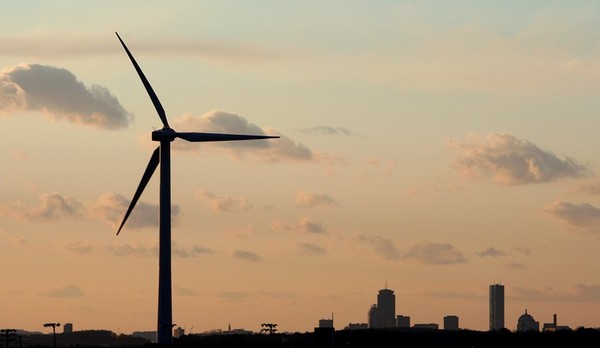Europe's cap and trade scheme is failing. Miserably.

Whether or not you accept the scientific data on climate change (you should!), it is common sense that pumping more and more carbon dioxide into the atmosphere isn't the best idea in the world. Since scientists are unsure how much the temperature will change in response to CO2 levels, the "conservative" thing to do is to be cautious. After all, simple physics tells us that, over time, more carbon dioxide will lead to a warmer planet.
Therefore, finding ways to reduce our carbon emissions is good policy. Generally, there are two ways proposed to do it: A smart way and a dumb way. You can probably guess which one the European Union implemented.
First, the smart way: A corrective tax (a.k.a. Pigovian tax) applied on fossil fuels would be an easy, straightforward method to reduce carbon emissions. Dirtier fuels (e.g., coal and oil) would pay the highest tax, while cleaner fuels (e.g., natural gas) would pay less. Nuclear, solar, wind and other clean energy sources would pay none at all. The size of the tax would always be known, so companies could plan accordingly.
Then, there's the dumb way: Cap-and-trade. It's not that it can't be successful; cap-and-trade helped mitigate the scourge of acid rain. But, as Hank Campbell and I wrote, it suffers from considerable drawbacks, such as unpredictable price fluctuations and the creation of an inefficient, complex bureaucracy which can lead to corruption. This fosters a chaotic atmosphere that is not only bad for business, but undermines public confidence in governments' ability to reduce CO2 emissions.
Back in 2005, the European Union launched its Emission Trading Scheme (ETS), and as the New York Times reported on Sunday, it is failing spectacularly. Why? Because of "serious flaws in the design of the system," as The Times writes. It goes on to say:
This year has been stomach-churning for the people who make their living in the arcane world of trading emissions permits. The most recent volatility comes on top of years of uncertainty during which prices have fluctuated from $40 to nearly zero for the right to emit one ton of carbon dioxide.
There's that pesky price fluctuation we warned about. Too high of prices will hurt business, but too low of prices will undermine the entire point of the scheme. It's supposed to cost money to emit CO2, but if carbon is cheap, then there is no incentive to reduce emissions. And that's exactly what happened.
[A]t current levels, [prices] are far too low to change companies' behaviors, analysts say. Emitting a ton of carbon dioxide costs about the same as a hamburger.
To increase prices, carbon emission permits are supposed to be withdrawn from the market, decreasing the supply and increasing the price. But, given the poor state of Europe's economy, the European Parliament didn't want to do that. Thus:
[O]ver time, the declining prices for the credits have sapped the European market of value, legitimacy and liquidity â?? the ease with which the allowances can be traded â?? making it less attractive for financial professionals.
Furthermore, the EU Observer reported in 2009 that the ETS is "a magnet for tax fraud on a grand scale, costing government coffers around â?¬5 billion euros." And to add insult to injury:
Europol, Europe's criminal intelligence agency, said that as much as 90 percent of the entire market volume on emissions exchanges was caused by fraudulent activity, undermining the very viability of the ETS just as the EU is touting a similar scheme for the rest of the world. [Emphasis added]
Unpredictable price fluctuations? Check. Inefficient bureaucracy? Check. Corruption? Check. Undermining public confidence? Check.
I'm not the sort of a person who does an "I told you so" dance, but, well ... I told you so.
(Image: AP photo)



